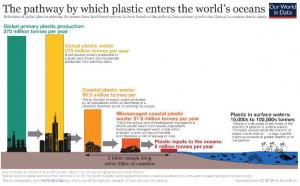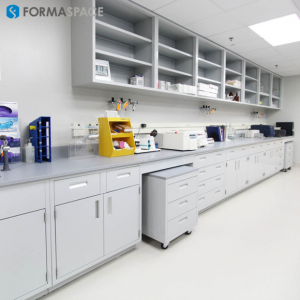Microplastics in the Environment are Now Entering the Blood Stream
Find out how to control the proliferation of plastic contamination in the environment and what the implications of them are for human health.
Cue the Sarah McLachlan music.
For anyone who has been brought near to tears at the sight of animals in trouble, the image of a bird with a 6-pack beer/soda ring lodged around its neck is not only heartbreaking, it’s a poignant example of how plastic pollution is upending our environment.
Perhaps worse is what’s happening on the inside. Animals from birds to whales, sea turtles to salmon are mistaking plastic refuse for food, with dangerous consequences not only for them but for us.
Indeed, maybe scientists should rename our current Anthropocene age, calling it the “Plasticene” era instead, for that may well be how we’ll be remembered – embalmed in plastic.
How Microplastics Proliferate In The Food Chain
Production of plastics has ramped up significantly since World War II; experts estimate we’ve produced 10 billion tons to date, only 60% of which is captured in landfills.
The rate of plastic production increases each year, as does the amount of waste finding its way into waterways and oceans. The coastal pollution problem is particularly acute (on a per capita basis) in Panama, Guyana, Suriname, the Philippines, Malaysia, and countries along the west coast of equatorial Africa, but all nations are contributing to the problem of plastic pollution in the ocean.
As unwanted plastics enter the ocean, they can break down into smaller “microplastics” – ranging in size from 0 to 5 mm – allowing them to easily be ingested by wildlife and enter the food chain.
Laboratories Confirm Microplastics Are Entering The Human Blood Stream
We’ve known about the presence of microplastics in the guts of fish and other wildlife for quite some time as well as the presence of microplastics in sea salt, potable water, and beverages, such as beer.
So, it was probably inevitable that laboratory scientists at the Vrije Universiteit Amsterdam were able to detect the presence of plastics in human blood for the first time.
This discovery builds on previous research at the University of São Paulo, which identified the presence of airborne microplastics in human lung tissue as well as research from the San Giovanni Calibita Fatebenefratelli Hospital in Rome, which identified the first evidence of microplastics in human placentas.
The measurement technique used by the Dutch researchers to identify the presence of plastics in blood was a gas chromatography/mass spectrometry analysis performed at both low (80-350°C) and high temperatures (500-800°C) – a technique known as a Double Shot Pyrolysis.
They detected four common industrial plastic polymers (at concentrations of 1.6 μg/ml) in samples of human blood:
- Polyethylene terephthalate
- Polyethylene
- Styrene polymers (incl polystyrene, expanded polystyrene, acetonitrile butadiene styrene, etc.)
- Methyl methacrylate
Can We Predict The Long-Term Impact Of Plastics Exposure On Human Health?
Now that we have confirmation that plastics have not only entered the human food chain, but also the bloodstream, how can we identify the long-term health consequences to human health?
There is a major concern that the ingestion of microplastics could cause cancer, heart disease, organ damage, inflammation, oxidative stress, as well as disruptions to our immune and endocrine (hormone) systems. Plastic particles might also become a novel vector for infections, as bacteria can bind to biofilms that can form on plastics.
However, we may have to rely on animal models to confirm this research, as it’s not ethical to purposefully expose humans to plastic – beyond what’s already happening in the natural environment.
But given these limitations, we can draw some preliminary conclusions about how plastics could move around within the body based on their size:
Plastics smaller than 150 μm can generally cross the lining of the stomach and intestines (gastrointestinal epithelium) although less than a percent are expected to be absorbed.
Read more...
Julia Solodovnikova
Formaspace
+1 800-251-1505
email us here
Visit us on social media:
Facebook
Twitter
LinkedIn
Legal Disclaimer:
EIN Presswire provides this news content "as is" without warranty of any kind. We do not accept any responsibility or liability for the accuracy, content, images, videos, licenses, completeness, legality, or reliability of the information contained in this article. If you have any complaints or copyright issues related to this article, kindly contact the author above.



